Golf is a technical sport, but the biggest leaps in performance often come away from the driving range.
Strength, flexibility, core stability and a smart warm‑up routine all influence how far and how accurately you hit the ball.
Below you’ll find answers to common questions golfers ask about training, along with simple exercises and research‑backed tips.
The advice is written for adults at a seventh‑grade reading level, but the science comes from peer‑reviewed studies and world‑class coaches.
Many players try to perfect their swing mechanics while neglecting the muscle power that drives the club.
A review of golf research found that handicap and swing performance are strongly linked to muscle strength, especially in the legs, hips and trunk.
A meta‑analysis of more than 130 studies reported that eight weeks of strength training can increase driving distance by up to 10.9 % and club head speed by around 6.3 %.
Stronger muscles also reduce injury risk; golfers who followed resistance‑training programs saw 33–50 % fewer injuries.
To build explosive power, focus on compound exercises that train your legs and hips.
Squats, lunges, deadlifts and glute bridges strengthen the lower body and improve your ability to transfer force from the ground to the club. Medicine‑ball throws and cable woodchops develop rotational power.
Grip strength correlates with swing speed, so include farmer’s carries or heavy dumbbell holds. Perform 2–3 strength sessions per week, allowing rest between days.
If you’re unsure how to start a strength plan, our semi‑private training programs provide expert coaching, modifications for your body and progress tracking.
The bar chart below illustrates how a comprehensive strength program can improve key swing metrics.
Values are based on the RunRepeat meta‑analysis and show percentage improvements compared with baseline performance.
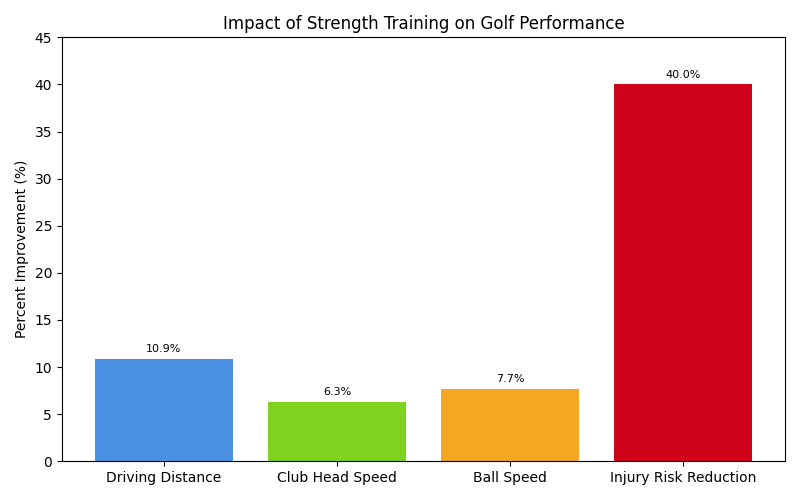
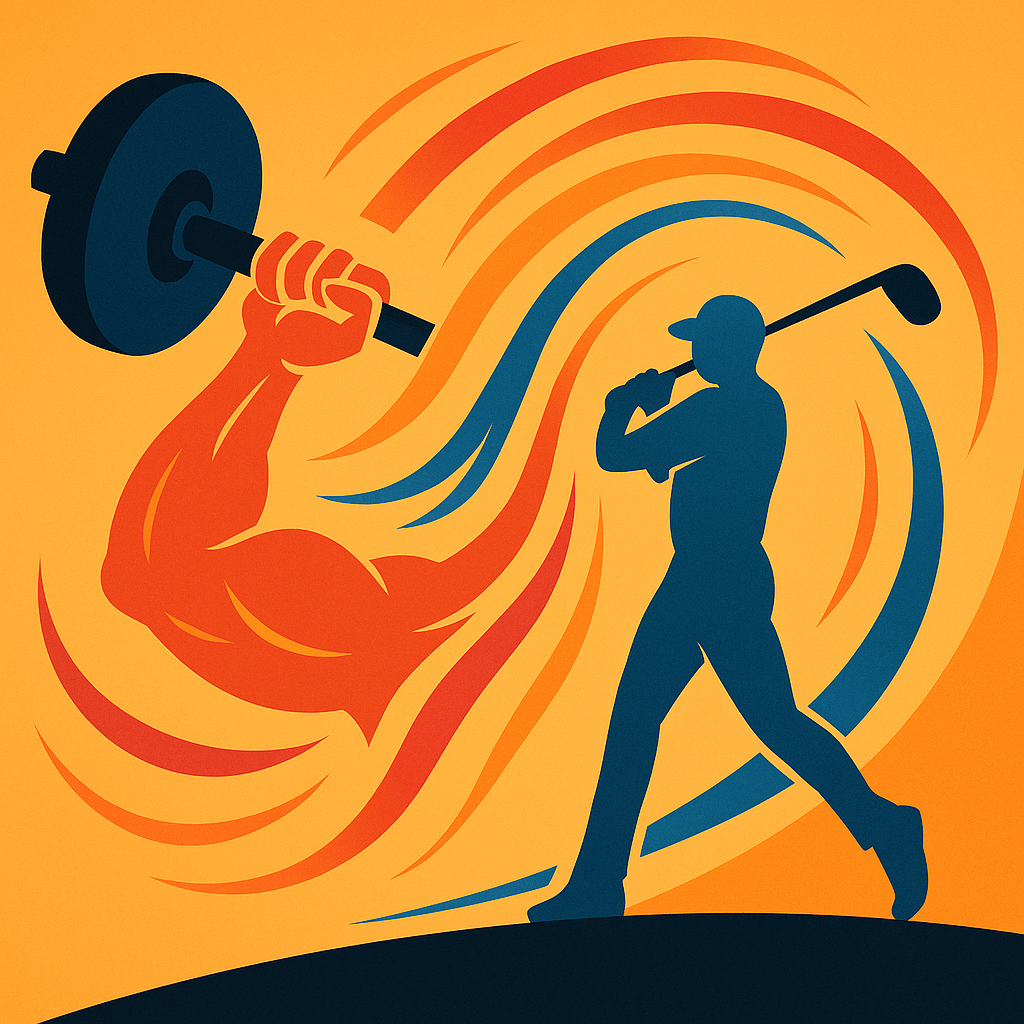
Strength gains take time, but small weekly improvements add up.
As you get stronger, you may need higher resistance or more challenging variations.
Our Women’s Body Sculpt sessions are designed to build lean muscle without bulking up.
A fluid backswing and follow‑through require muscles that are both strong and supple.
Static stretching alone can actually reduce power output, while dynamic warm‑ups paired with functional resistance (such as a theraband) improve driving distance and ball strike consistency.
Dynamic stretching increases blood flow and range of motion, which lowers injury risk and improves performance.
The Mayo Clinic recommends a warm‑up of 5–10 minutes of light activity followed by gentle stretches that mimic your swing.
Here’s a simple routine:
Regular mobility work can prevent lower back pain, which affects 15–35 % of amateur golfers due to limited hip and thoracic mobility.
For more ideas on dynamic warm‑ups, check out our guide to warming up and our outdoor workouts article featuring mobility drills.
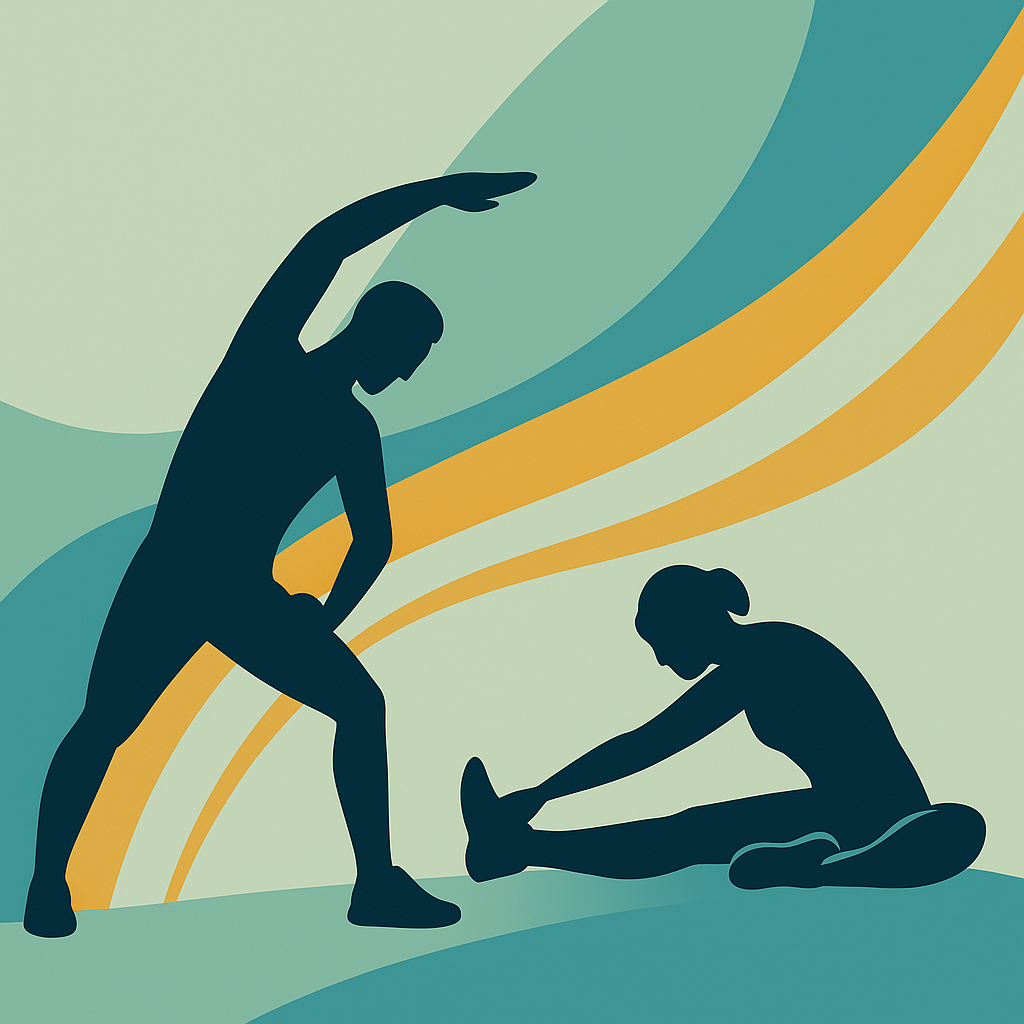
Your hips are the engine that drives the rotation in a golf swing.
Research from the Titleist Performance Institute (TPI) shows that PGA Tour players have over 45 degrees of internal hip rotation, while limited hip mobility causes sway and slide faults.
Strong gluteus maximus and medius muscles stabilize the pelvis and allow you to rotate powerfully and safely through the ball.
To improve hip mobility and strength:
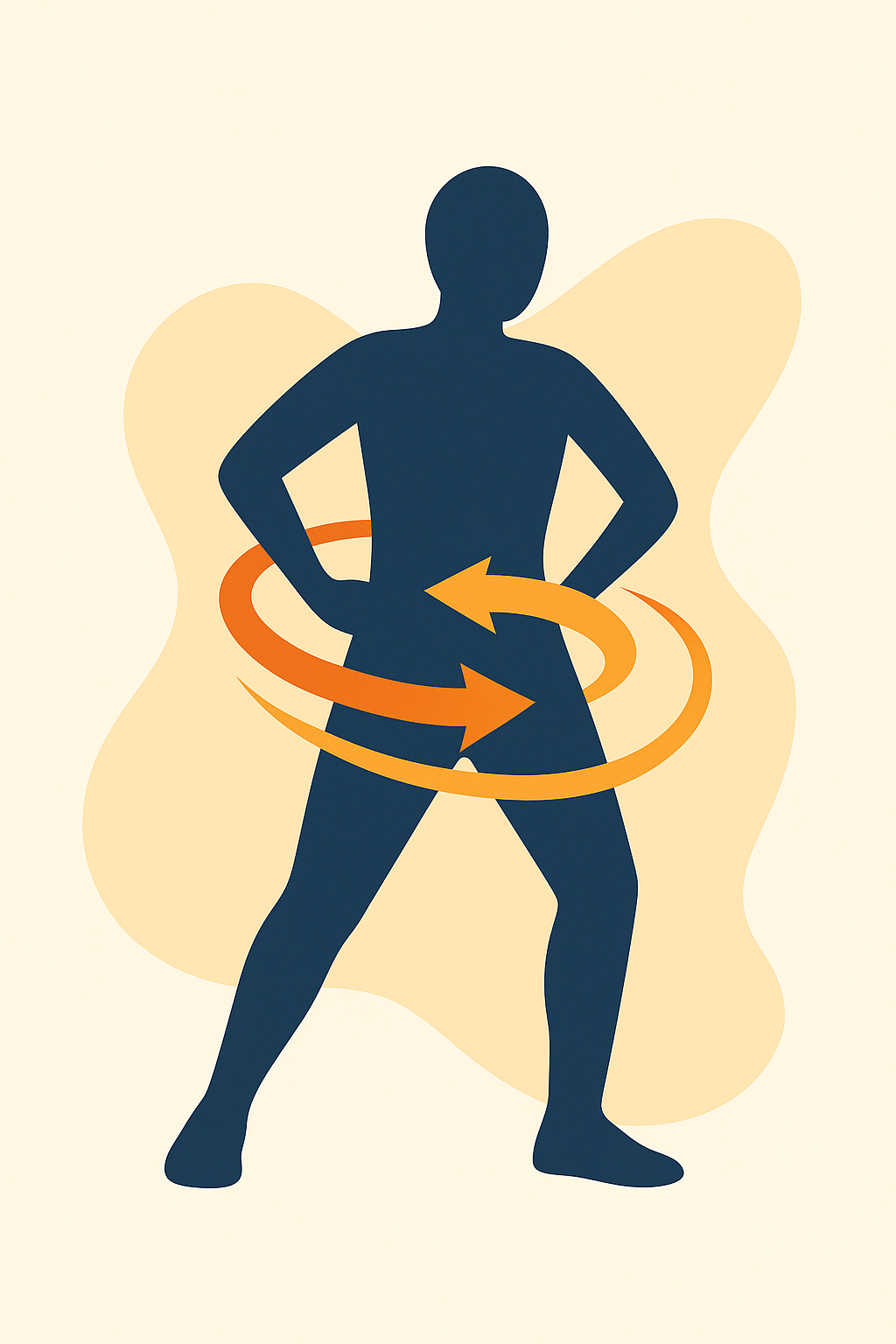
Regular hip work not only increases power but also reduces stress on your lower back.
Many golfers with poor hip rotation compensate by over‑twisting their spines, leading to pain and injury.
Strengthening your glutes can also help with everyday movements such as climbing stairs or picking up groceries.
Our fitness routines for weight loss article includes additional lower‑body exercises that double as golf training.
Arriving at the first tee without warming up is a recipe for tight muscles and inconsistent shots.
Studies comparing different warm‑ups found that active dynamic stretching combined with functional resistance immediately increased maximum driving distance and smash factor, while static stretching alone hindered performance.
A proper warm‑up should elevate your heart rate, mobilize major joints and prime your nervous system.
Try the following 10‑minute routine before each round:
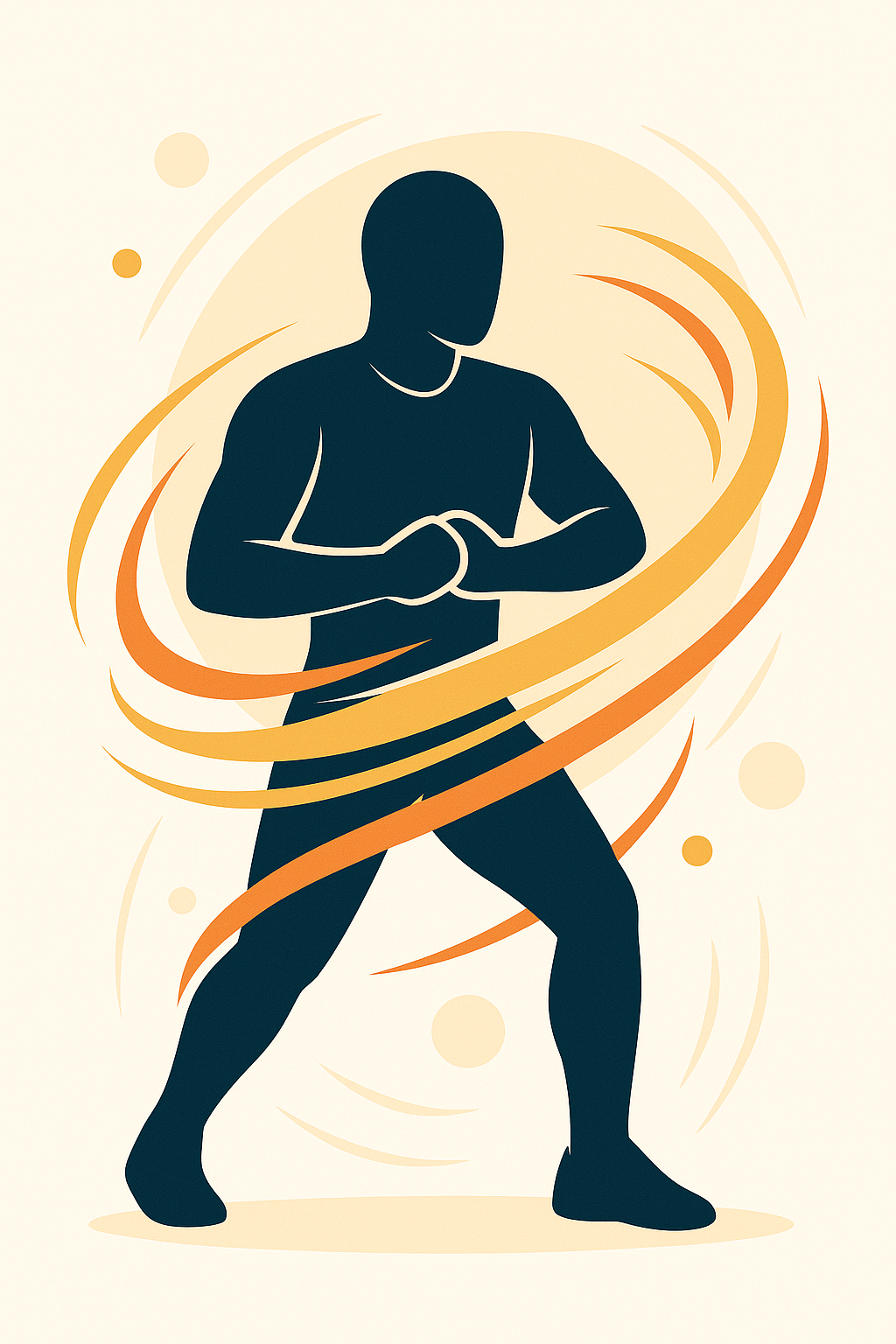
Spending a few minutes on warm‑up may feel tedious, but it prepares your muscles and joints for the explosive forces of the golf swing and reduces injury risk.
Our warming up guide includes more detailed step‑by‑step routines tailored to different fitness levels.
The core connects your upper and lower body and transfers power from your legs through your torso to the club.
Meta‑analysis data show that core training alone can add about 5 % to your drive distance.
A strong core also helps maintain posture during the swing and reduces strain on the spine.
Incorporate these golf‑friendly core moves into your routine:
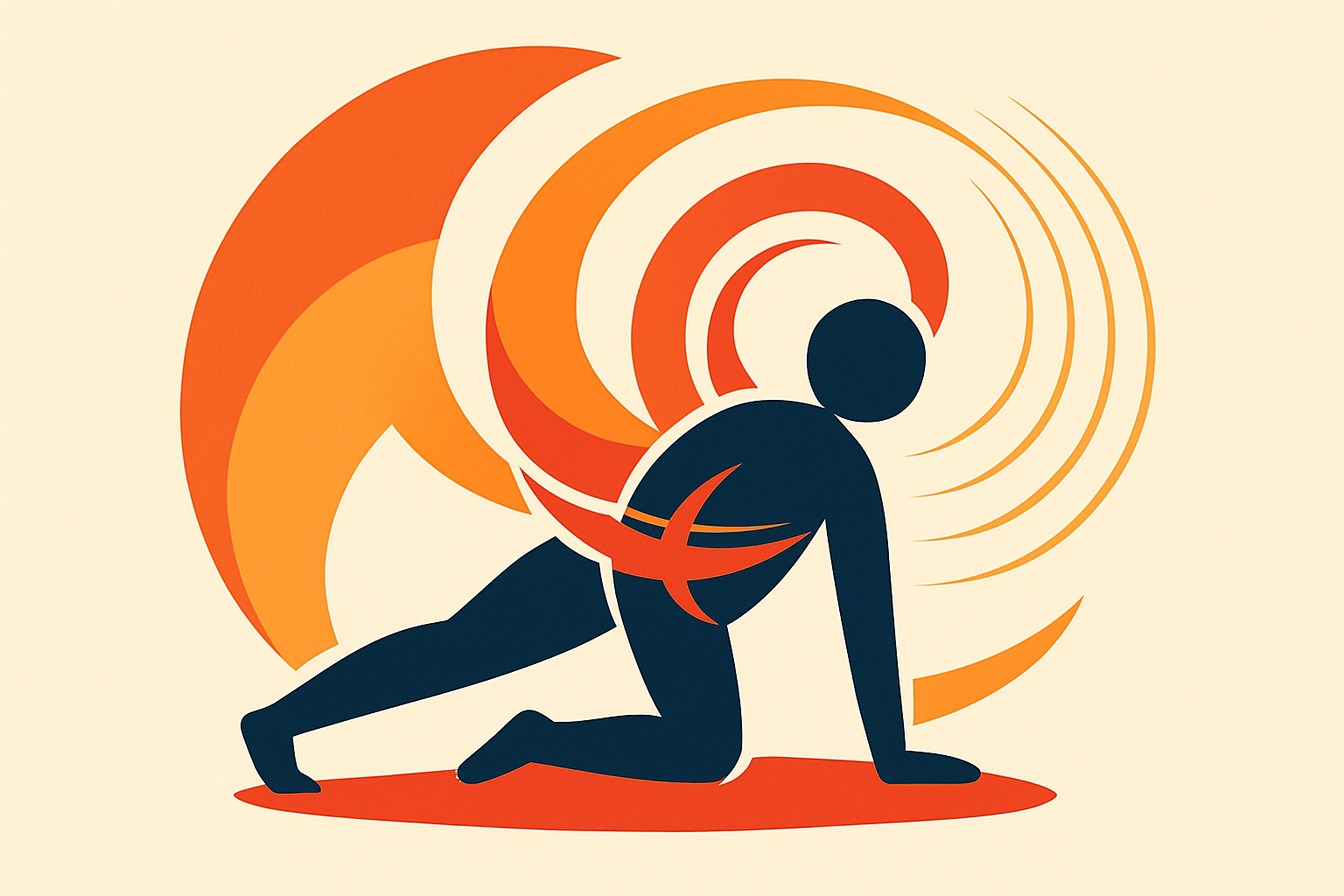
Aim for 2–3 sets of 10–15 repetitions of each exercise, focusing on controlled movements and proper form.
Our kettlebell workout post includes variations like the Turkish get‑up, which also improves core stability and shoulder strength.
Improving your golf swing isn’t just about technical tweaks—it’s about building a body that can produce power, stay flexible and withstand repeated swings.
Research shows that combining strength training, mobility work, dynamic warm‑ups and core exercises leads to longer drives, better ball speed and fewer injuries.
Consistency is key; small sessions performed several times a week will compound into noticeable improvements on the course.
At Catalyst Fitness we specialize in coaching adults over forty, tailoring programs to your goals, schedule and physical needs.
Whether you’re looking to add yards to your drive, increase flexibility or simply feel better moving through everyday life, our customized training plans, nutrition guidance and supportive community can help you get there.
Start with a free consultation and discover how smart exercise—not just more practice—can transform your golf game.